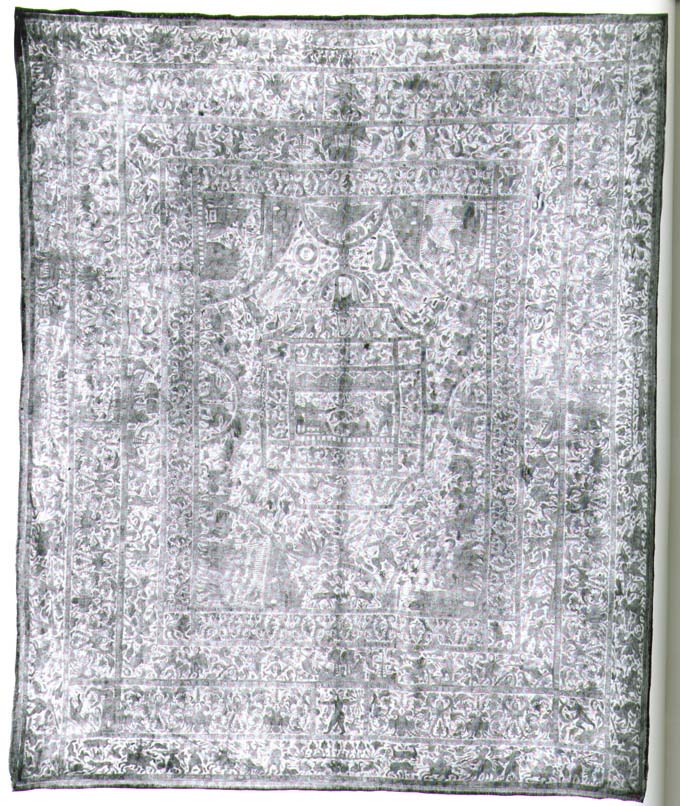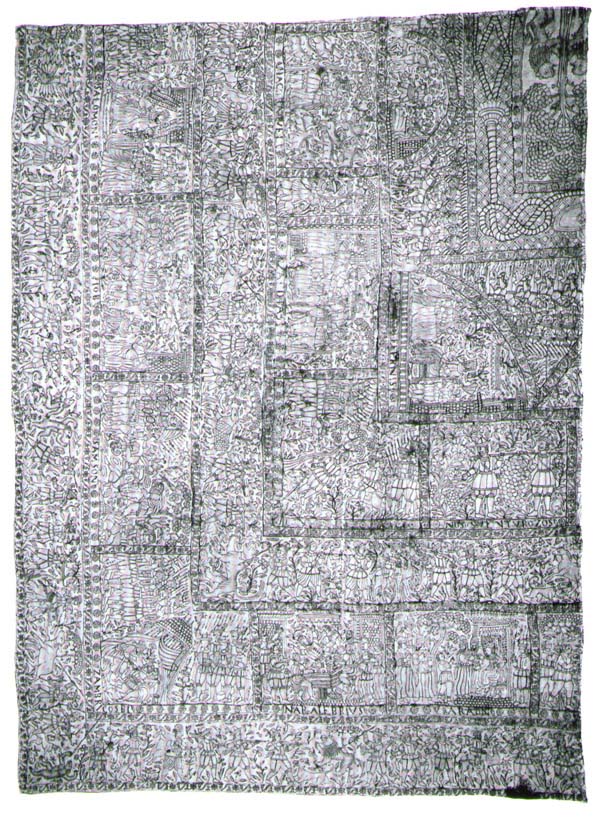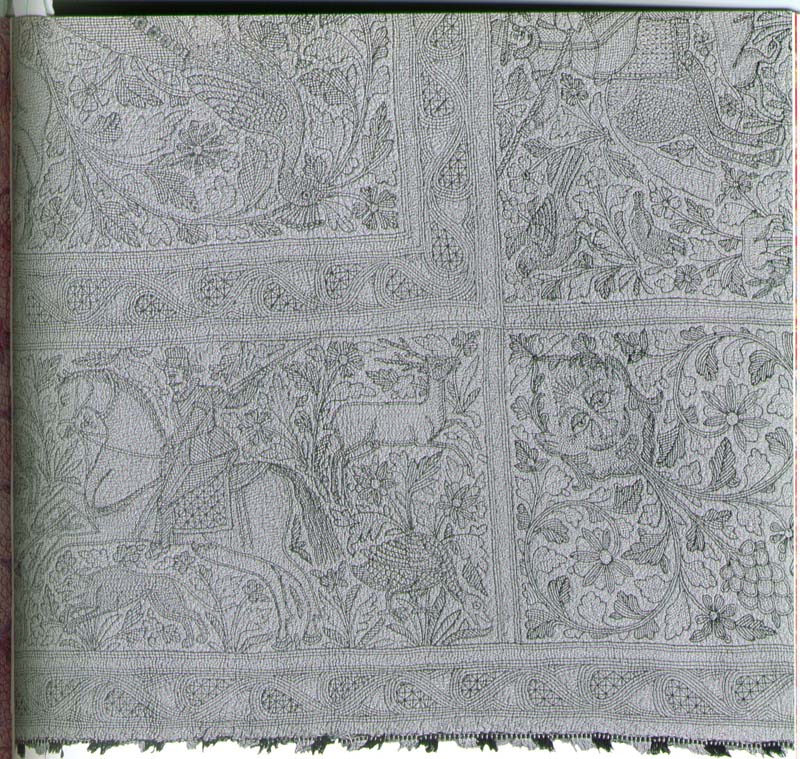
These quilts were made in the Castelo Branco area of Portugal from the 1500's through the 1700's, until a disease destroyed the silk worm population. This tradition of embroidered quilts began as a result of Portugese seafaring traders bringing quilts like these from India as well as Indian artisans. The local people in Portugal then, took of the tradition and made it their own. The quilts often featured floral, animal or other natural images. They mimicked the images on the quilts found in India.
The quilts often feature a center (rectangular, circular, oval, or other shapes) surrounded by 1 to 3 borders. The center area can be a medallion, inscription or panel design. The borders consist of stylized motifs of plants, animals, anthropomorphic or inanimate objects. Fantasy figures were also included. Inanimate objects included items from European, oriental and Middle Eastern cultures.
The embroidery was done on narrow bands of linen or cotton with unspun floss silk or with linen threads. Stitches include most commonly broad or Castelo Branco stitch (aka Bayeux Taperstry stitch), stem stitch, herringbone stitch and trellis-couching. Found usually only on the more elaborate coverlets were: chain, button-hone, feather, satin, daisy, french-knot, chevron, crown and a large variety of trellis couching. The colors used in the quilts are polychromatic through there are examples in plain yellow, plain blue and even plain ivory white but these are on dyed linen. Blues are most common, reds are found only in shades of plum, few greens were used and no brown. Yellows and pinks were also abundant.
The quilts were often finished with fringe made from either the main color or remainders of the other colors.
Cotton fabric was commonly used as it was more available in India. A middle layer of cotton wadding was used. the quilts were often quilted with an echo or stippled pattern. (Pages 7-15 of Portugal and the East Through Embroidery.

"Coverlet fragment (detail), Indo Portuguese, late 16th Century, 213 x 162 cm. White cotton embroidered in dark blue and red tussah silk. Back stitch. At the head of the field, an elephant - principal motif next to the tree of life. Scenes of forest life and hunting figures complete the design together with profuse ornamentation of geometric nature, polygonal arabesques, rosettes, etc. On the outer band of the right, maritime scenes." (page 16 and 17)

"Coverlet, Indo-Portuguese, early 17th century, 345 x 297 cm. White cotton embroidered in yellow tussah silk in chain, back and French knot stitch. Band pattern with 'Judgement of Solomon' as central design... In the field and border, human and animal figures, maritime and hunting scenes, figures in 17th centurry Portuguese costume and classical and Hindu mythological figures." (page 18)

"Coverlet fragment. Indo-Portuguese, 17th century, 184 x 135 cm. White cotton embroidered in blue tussah silk, Chain and back stitch. Biblical andhunting scenes, figures in 17th century Portuguese costume fill the bands and the border." (page 19)

"Coverlet (detail), Indo-Portuguese, 17th century, 260 x 209 cm. White cotton embroidered in light blue and burned yellow silk thread. Chain, back and French knot stitch with crochet cord applique on cotton paste and sackcloth lining. In the central panel, a Portuguese vessel with crew of two and on the masts, flying with the cross of Christ. Floral ornamentation. Sea monsters, mythological figures and knights flighting a dragon fill the field. On the border, interlaced foliage decorationa nd in teh corners, sea spirits playing trumpets. Silk tassels and fringe in colors of the embroidery." (page 20-21)

"Coverlet (detail), Indo-Portuguese, early 17th century, 278 x 200 cm. White cotton embroidered in red and yellow silk (bombix mori). Back and chain stitch on two quilted canvases with cotton paste. In the central medallion, pelican feeding it's young, in the field, figures of native women, dragons in pairs, peacocks, foliage and stylized geometric ornamentation. On the border, stag and boar hunting scenes with horsenmen in early 17th century Portuguese costume, one horseman in Origntal costume. Silk fringe and tassels in colors of the embroidery." (page 21)

18th Century coverlet. Page 90 of Paine, Sheila. Embroidered Textiles Traditional Patterns from Five Continents. New York: Thames and Hudson Ltd. 1990 ISBN 0-500-27823-7.
Source: International Exhibitions Foundation. Portugal and the Eath Through Embroidery 16th to 18th century Coverlets from the Museu Nacional de Arte Antiga, Lisbon. International Exhibits Foundation. Washington. 1981. ISBN 0-88397-038-4
Email the page owner Lady Almaith